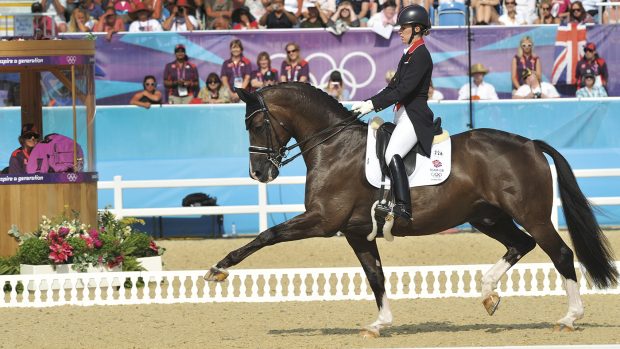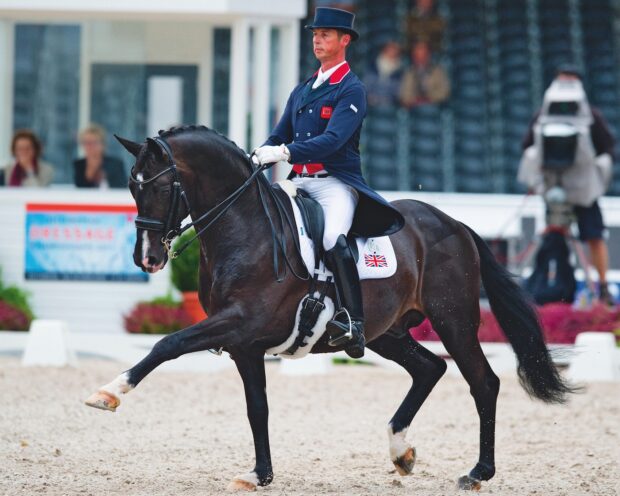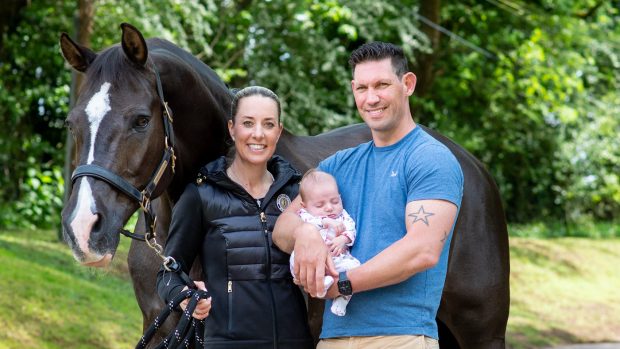Despite an inauspicious start, Valegro became a household name thanks to his record-breaking performances with Charlotte Dujardin, earning himself a place in history. Polly Bryan charts the story behind the gold medals
There can be no other horse who has done more for his sport than Valegro. Ridden by Charlotte Dujardin, this remarkable gelding – known at home as Blueberry – made history time and time again. From Olympic gold medals to breaking world records for fun, he has done it all – and inspired an enormous, adoring fan base across the world.
Dressage enthusiasts in their thousands have followed the trio of Valegro, Charlotte and Carl Hester, and their glittering career trajectory. But far fewer will know how close the greatest team that British dressage has ever had came to ending, before it had even got off the ground.
Carl’s first glimpse of Valegro was as a rising three-year-old at the KWPN stallion show and grading in Ermelo in 2005.
“I was staying with Anne and Gertjan van Olst in the Netherlands, and Anne suggested we go to watch the grading – I’d never experienced one before,” remembers Carl.
“Gertjan had five or six young horses going through, one of which was Valegro, a son of Negro. The whole process seemed very fast, and all I can remember was this huge canter in a very small space – I just couldn’t take my eyes off Valegro and his canter. He was quite small and cobby; he always had that chunkiness and strength about him, with the head of a duchess and the bottom of a cook.
“He wasn’t accepted, so went out the back with the other horses who were going to be sold. When it was over, Anne and I went out to see him and he had such a charming look about him – he was so grown up, even then.”
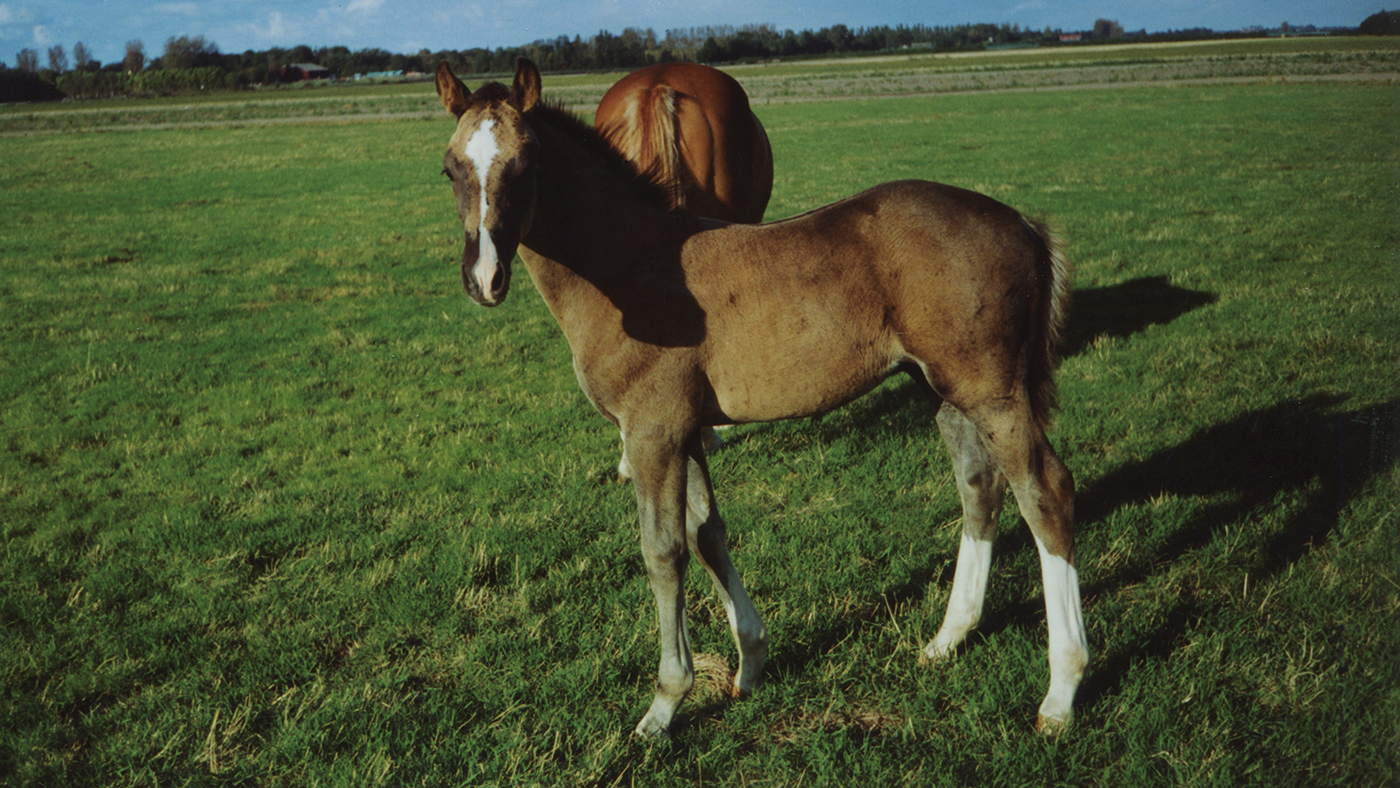
Valegro wasn’t expensive, and after he had been gelded he arrived at Carl’s yard in Gloucestershire. But he didn’t prove a superstar right away – and certainly didn’t seem as though he’d grow big enough for Carl.
“He didn’t grow until he was nearly five, but he was hellishly strong for a little chap, and was also a mild headshaker,” explains Carl. “So I said to Anne, ‘I’m going to bring him back and we’ll find him another home.’”
Carl dropped Valegro back at the van Olsts’ yard en route to a five-day show in the Netherlands, but as he started the journey back to the UK, Anne advised him to reconsider keeping Valegro.
“So I stopped there again on the way back and Valegro got back on the lorry. He ended up just having a five-day holiday in the Netherlands,” Carl laughs.
Reinstated in Gloucestershire once more, Valegro swiftly began to make his mark. Under Carl he was four-year-old national champion in 2006, and in the same year won the Badminton Young Dressage Horse of the Future ridden by Lucy Cartwright – with Carl and Uthopia second. And it was around the same time that Carl took on a new pupil he was quietly excited about, who appeared a good match for Valegro. That pupil was, of course, Charlotte Dujardin.
The partnership gelled immediately, clocking up copious national titles in their early years together – the novice title in 2007, elementary and medium the following year, and the coveted prix st georges title in 2010. Every new challenge thrown at Valegro, he took on with relish and talent to burn – earning himself the nickname of “The Professor”.

Lucy Cartwright riding a young Valegro
The road to the London Olympics began in 2011, as Charlotte and Valegro exploded onto the international grand prix scene in Vidauban, France, winning two grands prix and two grand prix specials in quick succession.
“After Blueberry’s first win, Carl’s phone started buzzing constantly and suddenly people were asking, ‘Who is this rider? Who is this horse?’ It wasn’t the quiet trip we had expected!” recalls Alan Davies, super-groom to Carl and Charlotte.
Even more astonishing was their team debut at the Rotterdam European Championships later that same year, where they helped Britain clinch team gold, with Carl famously hiding behind a pillar with tears in his eyes as he watched his protégé perform a stunning grand prix.
London 2012 will likely never fall from its pedestal, the glorious culmination of a decades-long effort to raise the profile of British dressage, much of it spearheaded by Carl. And the final ingredient that helped work the magic: Valegro.

Carl Hester riding a young Valegro, showing off his enormous canter
He had burst onto the international scene just the year before, and was now the subject of a strange mixture of mystery and expectation. Could this “wonder horse” really live up to the task on the biggest stage of them all, especially when the usually nerve-free Charlotte admitted her legs were like jelly as she began her grand prix? Of course he could.
“Boom! Her first extended trot banged in the nines. If Charlotte finally felt the magnitude of what she had to do, Valegro didn’t,” wrote H&H reporter Catherine Austen at the time.
Two plus-83% scores for Valegro in the grand prix and the special meant that Britain topped the podium, but it was his individual gold medal in the freestyle that completed the fairy tale.
As Valegro danced to the patriotic strains of Land of Hope and Glory, the picture of willingness and harmony, tears flowed in every corner of the Greenwich stadium. The now infamous hiccup in the piaffe-pirouette as Charlotte and Valegro began their final centre line was not enough to dampen the magic of their performance, and the moment their 90.089% score flashed up on the giant boards was one nobody lucky enough to be present is ever likely to forget.

Valegro at the British Young Horse and Breeding Championships in September 2008
The two years following the London Olympics brought yet more gold medals for Valegro, and records too. He and Charlotte toppled the world record previously set by Edward Gal and Totilas for the grand prix freestyle, scoring 93.97% at Olympia 2013, and a year later breaking their own record with a still-standing 94.3%. But beneath the shining surface was the ongoing, very real possibility of Valegro being sold, and it was a period that Charlotte later revealed left her battling depression.
It was seeing Valegro secure yet another individual gold for Britain at the 2013 European Championships, followed by his record-breaking Olympia performance, that convinced Carl and co-owner Roly Luard that they had to do whatever it took to keep this incredible horse.

Charlotte and Valegro at Olympia in 2013
When the news broke in H&H that they were looking to form a syndicate to keep him, Anne Barrott contacted Carl, and in 2014 she became the third owner of Valegro. Her investment was duly rewarded, with Charlotte and Valegro becoming world champions later that same year at the World Equestrian Games in Normandy.
One last hurrah for Valegro
As the rest of the dressage world looked ahead to the Rio Olympics with bated breath, hoping Valegro could defend his title, Carl and Charlotte shared a secret. The 2016 Olympics was likely to be Valegro’s final competition.
“When we went out to Rio, Charlotte and I were the only two people who knew this was probably his last performance,” says Carl. “We were loath to say anything to anyone about his retirement; what if he didn’t then win?”
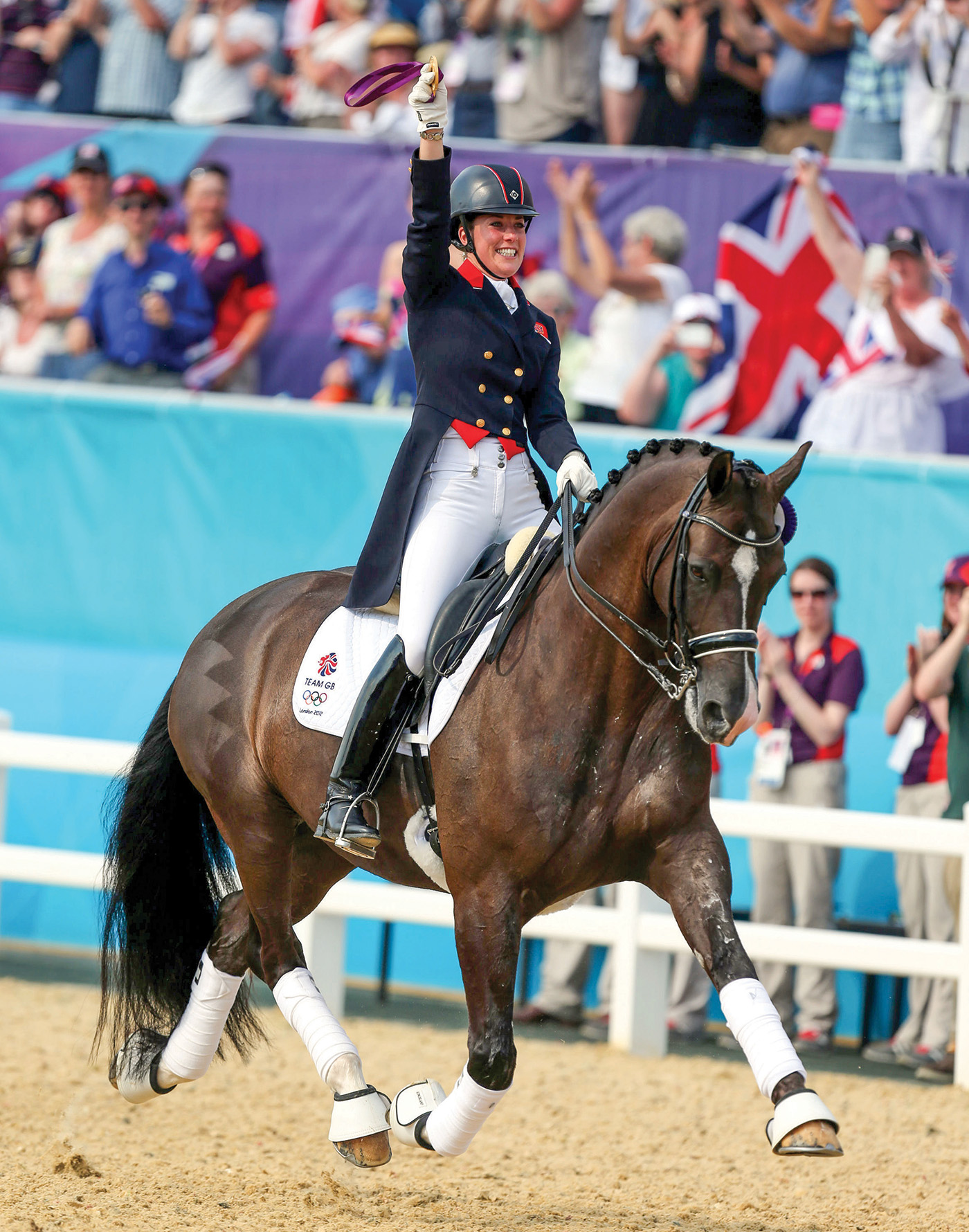
If the London Olympics had demonstrated Valegro’s immense talent, it was the Rio Games that proved the embodiment of his character. Never before, and perhaps never again, will the dressage world see a horse whose physical ability is matched with such a desire to please his rider, to strive for her and with such pleasure in doing so.
The knowledge that her Rio freestyle was likely her last time in the ring with Valegro, plus the enormous pressure Charlotte found herself under to win yet another gold medal, was enough to produce nerves unlike anything the usually steely rider had felt before.
“Just before she went into the arena for the freestyle was the first time I ever saw Charlotte slightly nervous,” remembers Alan, who routinely accompanied Charlotte and Valegro during the final moments before their test.
“I told her to take a deep breath, that she’d be fine. We had to walk down a ramp to get into the arena and as we did, Blueberry heard the crowd clapping and I just saw him lift as he completely went into performance mode, as if to say: ‘Come on Charlotte.’”
And what a performance it was – you’d be forgiven for truly believing that Valegro genuinely knew this was the time to bust out the test of his life.
“Blueberry knew I was nervous,” said Charlotte at the time. “He looked after me and helped me out. Trotting round the edge, he picked up and I knew we were ready to go.
“Then on the last centre line, he felt truly magical. It was effortless and easy and nothing was going to break that bond we have. I can’t tell you what it’s like to ride him; he has a heart of gold.”

Their final score of 93.857% – which included 37 10s from the seven judges – was just shy of their own world record, but was nonetheless a new Olympic record.
“It was the most sublime test I have ever seen,” says Carl. “He truly showed his trust in Charlotte, and that his enthusiasm for the job had never changed. The rest of his career was hugely fun, but that moment was the most emotional, and most special of all.”
For a horse to bring so much joy and evoke so much emotion, not to just his own connections, but to swathes of people across the world – including many who had never even seen dressage prior to 2012 – is truly remarkable.
This was perfectly illustrated by his emotional retirement ceremony at Olympia in 2016 – from which very few emerged dry-faced. But one of the most special things about this horse is the way in which he has continued to make an impact even after his competition days came to an end. Now aged 19, he maintains his zest for life and lovable nature, enjoying days in the field, long hacks, the odd public appearance and, ever The Professor, teaching some of Carl’s lucky pupils the ropes.
Valegro is a horse whose achievements and influence will stretch far beyond his own career, which will forever remain a shining highlight in the history of dressage.
As Carl puts it, “Valegro is a name that will, quite simply, last for eternity.”
Roly Luard on co-owning Valegro with Carl Hester and Anne Barrott

Valegro’s joint owner Roly Luard
“I was thrilled when Carl asked me if I’d like to join in the ownership of Valegro with him. We’d shared a couple of horses before and so I knew how much fun it was to own a horse with him.
“I was overjoyed to be asked; by that point, Valegro was seven and Charlotte was well established as his rider. I remember watching them compete in the early days, and thinking ‘wow’, and of course they went from strength to strength.
“I’ve been lucky enough to go to three World Cup Finals, and I will never forget arriving in Las Vegas for the 2015 final, and seeing these massive billboards everywhere with pictures of Charlotte and Valegro. It was completely surreal, as was the return flight from Vegas when the pilot congratulated me – I had to pinch myself.
“The timing of Valegro’s career was unbelievable – we had never beaten the Germans or the Dutch before, and it’s been amazing to see how far the Brits have come.
“I owe the formidable combination of Carl, Charlotte and Valegro a massive amount, and thank them for all the sheer excitement, and the great feeling of patriotism and being loyal to Britain. And we have had such fun.
“Now I have shares in two more horses with Carl and it’s thanks to Valegro; my time in the sport isn’t just a memory now, but is something that I’ve been able to carry forward. Valegro is not just a household name, he really has changed so many people’s lives.”
Alan Davies on Valegro bowing out at the top
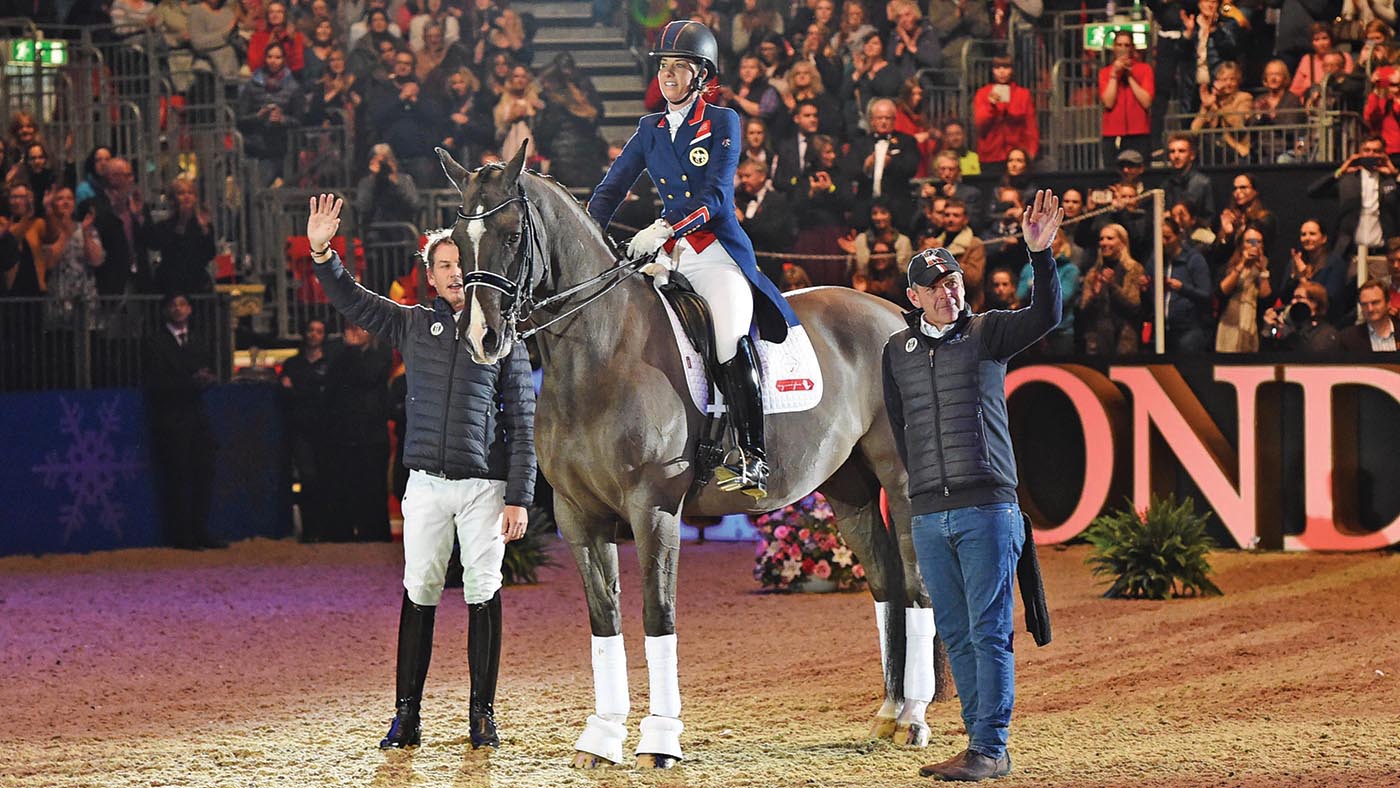
“It was Simon Brooks-Ward’s idea that I should lead Valegro into the last part of the retirement ceremony at Olympia [pictured]. I had to stay in the collecting ring on my own with him while they were doing interviews in the ring, and I was in pieces.
“I felt the tears coming and tried to pull myself together. But as the curtains opened, the noise from the crowd, the absolute love I felt from them for this horse, meant that I sobbed all the way up the centre line. It was tears of joy that he was going out at the top, that he was just the most phenomenal horse and everyone loved him – walking in there together, him and me, was the most incredible moment of my life.
“He and I have been all around the world together. Valegro’s trusted me to take him to all these places, to go off on the lorry together on all these adventures, and I felt so honoured that he loved and trusted me enough to walk with me up the centre line at Olympia.”
Valegro fact file
Born: 5 July 2002
Breeding: Negro x Gershwin
Studbook: KWPN
Height: 16.2hh
Breeders: Joop and Maartje Hanse
Owners: Carl Hester, Roly Luard and Anne Barrott
Rider: Charlotte Dujardin
The bloodlines behind Valegro

Negro and Valegro
Valegro’s illustrious sire, Negro (above, left, meeting Valegro), competed successfully to big tour himself, and now boasts more than 1,650 offspring, among them 38 licensed sons and more than 20 grand prix horses. He himself is a son of the great Olympic dressage horse Ferro, sire of more than 50 international grand prix horses.
Maifleur, Valegro’s dam, was by the Voltaire stallion Gershwin, out of the Heidelberg mare Weidyfleur. Credited with “keur” status by the KWPN in 1997, Maifleur was herself a prolific winner in breed classes, just as her own mother had been – both Weidyfleur and Maifleur were crowned champion of the Zeeland breed show.
Valegro’s breeders, Joop and Maartje Hanse, based at Burgh Hamstede in the Netherlands, selected the then-upcoming Negro to complement Maifleur’s jumping bloodlines. Her sire, Gershwin, jumped to 1.50m and was a successful sire of eventers, and his Furioso line is known for producing top jumpers.
Maifleur produced six foals, including three others by Negro, making them full siblings to Valegro. These are Weidyfleur II, now 18; Jalegrofleur, seven; and her final offspring, Lelegro, five – sold to Britain as a foal for €50,000 (£45,000).
– This feature was first published in H&H magazine, 15 April, 2021 –
You may also be interested in…
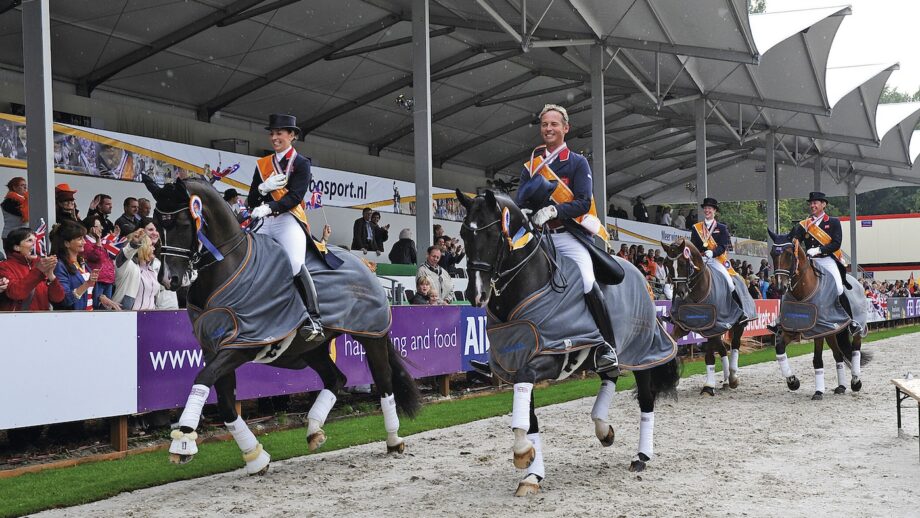
Heartbroken farewell to beloved superstars Valegro and Uthopia who created dressage’s golden era

‘You are still so loved’: Charlotte Dujardin pays farewell tribute to her world record-breaking partner Valegro

‘My treasured memories of Valegro’, according to his groom Alan Davies
Alan Davies shares some of his highlights and most treasured memories from his time as Valegro’s groom
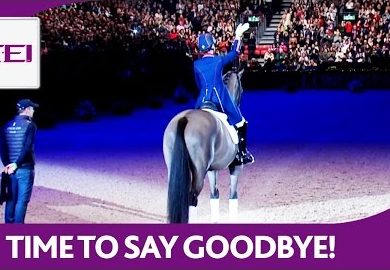
Relive the moment: watch Valegro’s Olympia retirement
A half-hour special video shows the dressage superstar's exemplary bowing-out ceremony

Watch Valegro’s greatest hits in action
As the equestrian world prepares to watch dressage sensation Valegro retire at Olympia tonight (14 December 2016), take a look


